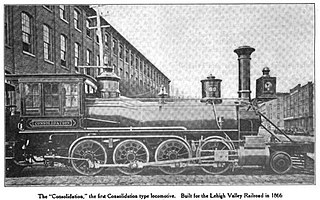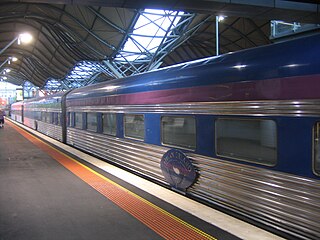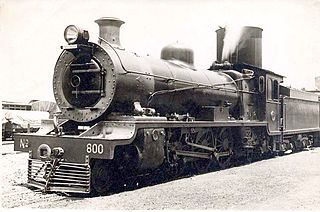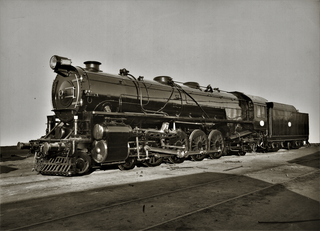| South Australian Railways 600 Class | |||||||||||||||||||||||||||||||||||||||||||||||||||||||
|---|---|---|---|---|---|---|---|---|---|---|---|---|---|---|---|---|---|---|---|---|---|---|---|---|---|---|---|---|---|---|---|---|---|---|---|---|---|---|---|---|---|---|---|---|---|---|---|---|---|---|---|---|---|---|---|
 South Australian Railways 600 Class Locomotive No. 605, c. 1926 | |||||||||||||||||||||||||||||||||||||||||||||||||||||||
| |||||||||||||||||||||||||||||||||||||||||||||||||||||||
| |||||||||||||||||||||||||||||||||||||||||||||||||||||||
| |||||||||||||||||||||||||||||||||||||||||||||||||||||||
| |||||||||||||||||||||||||||||||||||||||||||||||||||||||
The South Australian Railways 600 class was a class of 4-6-2 steam locomotives operated by the South Australian Railways.
| South Australian Railways 600 Class | |||||||||||||||||||||||||||||||||||||||||||||||||||||||
|---|---|---|---|---|---|---|---|---|---|---|---|---|---|---|---|---|---|---|---|---|---|---|---|---|---|---|---|---|---|---|---|---|---|---|---|---|---|---|---|---|---|---|---|---|---|---|---|---|---|---|---|---|---|---|---|
 South Australian Railways 600 Class Locomotive No. 605, c. 1926 | |||||||||||||||||||||||||||||||||||||||||||||||||||||||
| |||||||||||||||||||||||||||||||||||||||||||||||||||||||
| |||||||||||||||||||||||||||||||||||||||||||||||||||||||
| |||||||||||||||||||||||||||||||||||||||||||||||||||||||
| |||||||||||||||||||||||||||||||||||||||||||||||||||||||
The South Australian Railways 600 class was a class of 4-6-2 steam locomotives operated by the South Australian Railways.
The 600 class were part of larger order for 30 steam locomotives placed with Armstrong Whitworth, England in 1924 as part of the rehabilitation of the state's rail system being overseen by railways commissioner William Webb. The 600 class design was based on the USRA Light Pacific, although modifications were made by SAR's Chief Mechanical Engineer Fred Shea to allow them to fit South Australia's tighter loading gauge. They arrived in Adelaide in 1926. [1]
609 was named Duke of Gloucester after hauling the Duke's Royal Train in 1934 and so became Australia's first 'royal' engine.
The entire class received upgraded boilers and front ends from the late 1930s onwards and was reclassified as the 600C class. They were also fitted out with large smoke deflectors over their lifetime. Ten locomotives of the South Australian Railways 620 class were built at Islington Railway Workshops in 1936–1938 to a similar design.
All examples of the 600 class were withdrawn between 1955 and 1961. None were preserved. [1]

| Number | Date in Service | Date Condemned | Name |
|---|---|---|---|
| 600 | 14 August 1926 | June 1959 | - |
| 601 | 10 May 1926 | September 1958 | - |
| 602 | 25 May 1926 | June 1959 | - |
| 603 | 18 May 1926 | July 1961 | - |
| 604 | 13 August 1926 | June 1959 | - |
| 605 | 6 July 1926 | September 1958 | - |
| 606 | 8 July 1926 | May 1960 | - |
| 607 | 22 June 1926 | June 1959 | - |
| 608 | 22 July 1926 | May 1960 | - |
| 609 | 21 August 1926 | June 1959 | Duke of Gloucester |

Under the Whyte notation for the classification of steam locomotives, 4-6-2 represents the wheel arrangement of four leading wheels on two axles, six powered and coupled driving wheels on three axles and two trailing wheels on one axle. The 4-6-2 locomotive became almost globally known as a Pacific type.

Under the Whyte notation for the classification of locomotives, 4-6-4 represents the wheel arrangement of four leading wheels, six powered and coupled driving wheels and four trailing wheels. In France where the type was first used, it is known as the Baltic while it became known as the Hudson in most of North America.

A Garratt is a type of steam locomotive invented by British engineer Herbert William Garratt that is articulated into three parts. Its boiler, firebox, and cab are mounted on a centre frame or "bridge". The two other parts, one at each end, have a pivot to support the central frame; they consist of a steam engine unit – with driving wheels, trailing wheels, valve gear, and cylinders, and above it, fuel and/or water storage.

4-4-0 is a locomotive type with a classification that uses the Whyte notation for the classification of steam locomotives by wheel arrangement and represents the arrangement: four leading wheels on two axles, four powered and coupled driving wheels on two axles, and a lack of trailing wheels. Due to the large number of the type that were produced and used in the United States, the 4-4-0 is most commonly known as the American type, but the type subsequently also became popular in the United Kingdom, where large numbers were produced.

Under the Whyte notation for the classification of steam locomotives, 2-8-0 represents the wheel arrangement of two leading wheels on one axle, usually in a leading truck, eight powered and coupled driving wheels on four axles, and no trailing wheels. In the United States and elsewhere, this wheel arrangement is commonly known as a Consolidation, after the Lehigh and Mahanoy Railroad’s Consolidation, the name of the first 2-8-0.
Under the Whyte notation for the classification of steam locomotives, 2-8-2 represents the wheel arrangement of two leading wheels on one axle, usually in a leading truck, eight powered and coupled driving wheels on four axles and two trailing wheels on one axle, usually in a trailing truck. This configuration of steam locomotive is most often referred to as a Mikado, frequently shortened to Mike.

Rail transport in Victoria, Australia, is provided by a number of railway operators who operate over the government-owned railway lines. The network consists of 2,357 km of Victorian broad gauge lines, and 1,912 km of standard gauge freight and interstate lines; the latter increasing with gauge conversion of the former. Historically, a few experimental 762 mm gauge lines were built, along with various private logging, mining and industrial railways. The rail network radiates from the state capital, Melbourne, with main interstate links to Sydney and to Adelaide, as well as major lines running to regional centres, upgraded as part of the Regional Fast Rail project.

The Great Western Railway Iron Duke Class 4-2-2 was a class of 7 ft 1⁄4 in broad gauge steam locomotives for express passenger train work.

The Overland is an Australian passenger train service between the state capitals of Melbourne and Adelaide, a distance of 828 km (515 mi). It first ran in 1887 as the Adelaide Express, known by South Australians as the Melbourne Express. It was given its current name in 1926. Now operated by private company Journey Beyond, the train undertakes two return trips a week. Originally an overnight train that stopped at large intermediate stations, it now operates during the day, stopping less frequently. The Overland was converted to standard gauge in the 1990s and now operates from Melbourne over the longer standard gauge line initially heading south to the port city of Geelong, before returning to its original route in Ararat. After departing Ararat the train stops in the Victorian towns of Stawell, Horsham, Dimboola and Nhill before crossing the South Australian border. The final stretch into Adelaide, after crossing the Murray River is over the scenic Adelaide Hills. The train contains Red Premium and Red seated accommodation and a bar/lounge car, Café 828.

South Australian Railways (SAR) was the statutory corporation through which the Government of South Australia built and operated railways in South Australia from 1854 until March 1978, when its non-urban railways were incorporated into Australian National, and its Adelaide urban lines were transferred to the State Transport Authority.
The N class was a branch line steam locomotive that ran on Victorian Railways from 1925 to 1966. A development of the successful K class 2-8-0, it was the first VR locomotive class designed for possible conversion from 5 ft 3 in to 4 ft 8+1⁄2 instandard gauge.

Australia's National Railway Museum is the largest railway museum in Australia. More than 100 major exhibits, mainly from the South Australian Railways (SAR) and Commonwealth Railways and their successor, Australian National, are on display at its 3.5 hectares site in Port Adelaide, South Australia. The museum opened at Lipson Street in 1988 after 18 years at the SAR's former main locomotive depot at Mile End.

The South Australian Railways 620 class was a class of 4-6-2 steam locomotives operated by the South Australian Railways.

Gauge conversion is the change of one railway track gauge to another. This may be required if loads are too heavy for the existing track gauge or if rail cars are of a broader gauge than the existing track gauge. Gauge conversion may become less important as time passes due to the development of variable gauge systems, also called Automatic Track Gauge Changeover Systems.

The South African Railways Class 16B 4-6-2 of 1917 was a steam locomotive.

The South African Railways Class 16 4-6-2 of 1914 was a steam locomotive.

The South Australian Railways Y class was a class of narrow gauge steam locomotives operated by the South Australian Railways.

The South African Railways Class 5A 4-6-2 of 1903 was a steam locomotive from the pre-Union era in the Cape of Good Hope.

The South Australian Railways 500 class was a class of 4-8-2 steam locomotives operated by the South Australian Railways. They were rebuilt as 4-8-4s.

Eighteen South Australian Railways K class (broad-gauge) locomotives were built by Beyer, Peacock and Company for the South Australian Railways (SAR) between 1878 and 1884. Despite having a fundamental design flaw that affected their original role as light-line passenger locomotives, they eventually performed shunting duties exclusively. They operated for six decades.